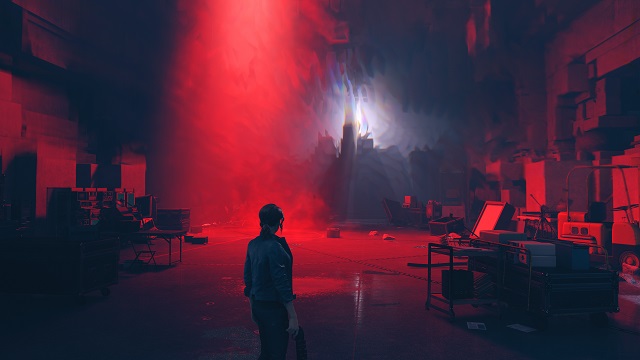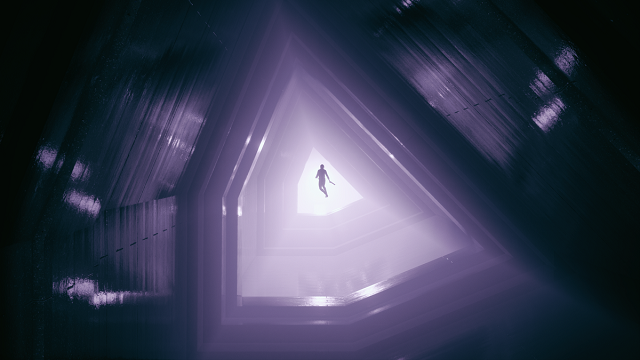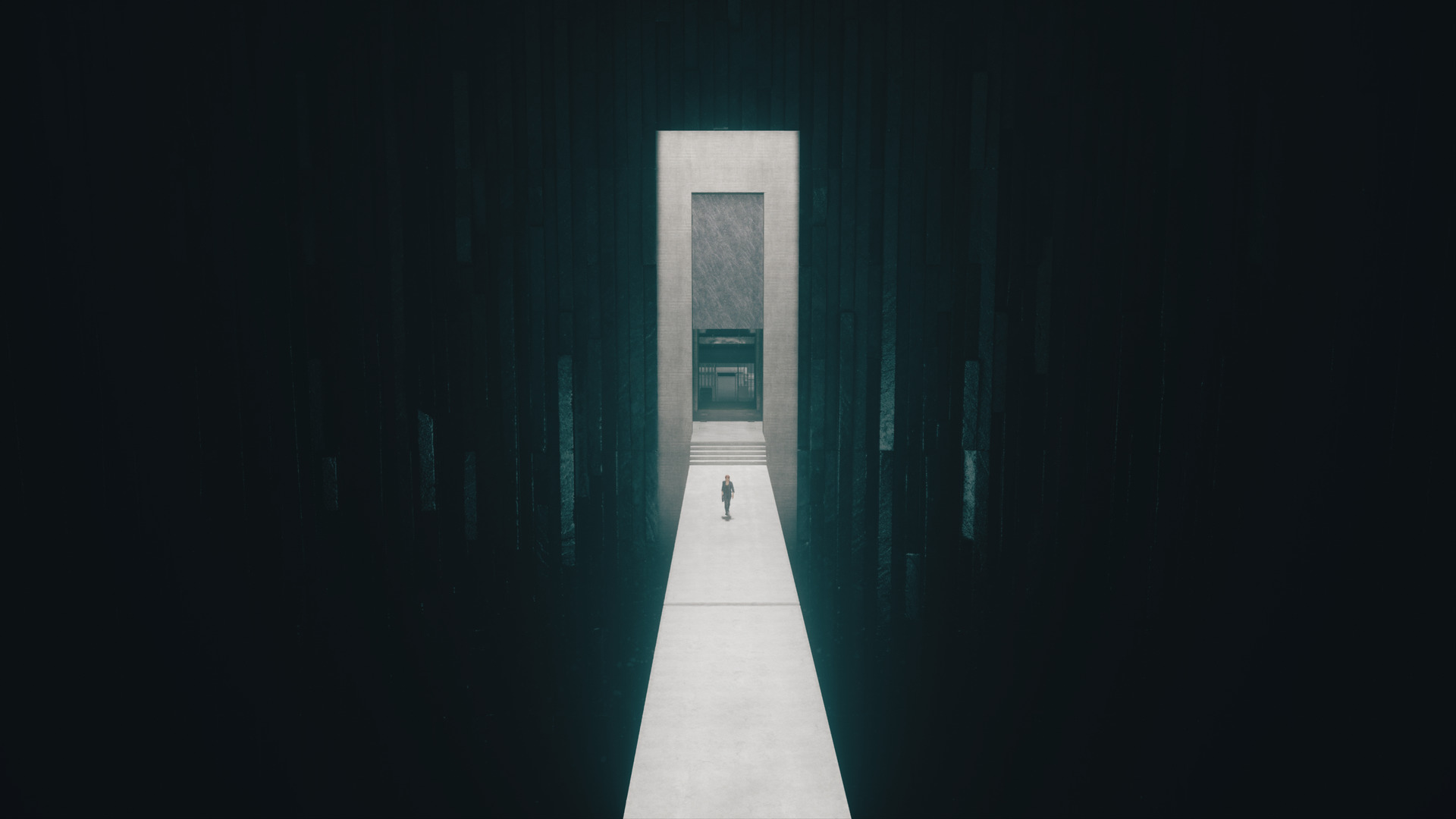Control is perhaps the biggest game of the week, if not the month. For longtime Remedy fans, though, it should be even bigger.
In the ever-shifting Oldest House, which hosts so many strange secrets and dangerous rabbit holes, there exist many references to Remedy’s previous and oft-beloved franchises, especially Alan Wake.
We turned over every stone and backtracked down every hallway to seek out the many references to Remedy’s 2010 thriller, and what we found was pretty astounding. The studio doesn’t just drop a few Easter eggs into Control, they outright connect the two worlds like films in the MCU — and even continue the plot of Alan Wake where we left off.
Not only that, but they even go so far as to connect all four of their major franchises, including Quantum Break and Max Payne. Excitingly, it seems like Remedy is slowly creating one conjoined story universe, which makes for a promising future following this week’s critical hit.
Of course, major spoilers follow. If you haven’t yet finished Control, bookmark this article and come back after you’ve done so.
Remedy’s games have always been self-referential. Alan Wake was an author famous for his gritty Alex Casey crime novels, and that titular character was meant as a blatant reference to Max Payne, the anti-hero from their previous series of the same name.
Quantum Break came along in 2016. It had all sorts of Easter eggs for Alan Wake, too, such as a long trailer called “Return” which Jack Joyce could watch on the campus of Riverport University. If such a reference seemed like merely a fun nod, things turned out to be deeper and more complex than that.
Moments later, a whiteboard decked out in wacky theories appears. Its scrawling tries to puzzle out what happened to Wake after he dove into Cauldron Lake, making it clear Wake is someone who is being investigated by someone in Quantum Break‘s world. He’s not just mentioned by the game’s writers for fans outside that world.
Control takes the self-referential content to new heights. It links together all four worlds, especially those of Alan Wake and Control. It does so in ways that I can’t recall any game ever doing. Remedy is building their own MCU — or what I’ve called elsewhere, the Grand Remedy Universe.
To trace this universe to its own Big Bang, we have to go back to 2012. That was when a blog titled This House of Dreams appeared online. The author, Samantha, chronicled her life while moving into her new home in a town called Ordinary. It wasn’t long until her daily posts about repairs around the house turned to something more mysterious — and maybe even dangerous.
Samantha found a shoebox. A very strange shoebox.
This House of Dreams was soon revealed to be part of an alternate reality game (ARG) from Remedy. If you follow the blog in chronological order from February 2012 when it began until July 29 of the same year — the last day a blog entry was made — the allusions become clearer and clearer. Samantha writes of a Dark Presence and a diver in a “strange, heavy diving suit, almost like a spacesuit” who speaks to her in her dreams and tells of his lover whom he lost to this darkness.
Why is any of this important? Well, here’s why.
If you can’t make out the words in the screen above, look for this whiteboard on the mid-level of the Central Research Center in Control.
To summarize, it’s a collection of notes on Sam’s shoebox. It mentions the blog, it mentions her town of Ordinary — the same town where Jesse is from, mind you — and it even mentions the “Bright Falls AWE,” where AWE stands for Altered World Event, and, of course, Bright Falls is the setting in Alan Wake.
These are events in Control defined by when the story’s alternate whitespace universe, the Astral Plane, leaks into our world and disrupts it in major ways.
If Jesse’s coworkers studying Alan Wake’s disappearance isn’t enough of a clue, there’s more. Take, for example, how the Federal Bureau of Control rebooted Night Springs (the show from Alan’s world) to introduce some of its wildest works to the public under the guise of a sci-fi anthology show.
There’s also the moment when the game humorously reveals a purpose for all those Oh, Deer Diner coffee thermoses you find in Alan Wake. Apparently, they are a suspected Altered Item (an item touched and forever changed by the Astral Plane). Now they serve piping hot coffee with every pour, no matter how long ago they were filled.
The game even reveals that a character from Alan Wake, Sheriff Breaker’s father, is a retired FBC agent. He’s the agent who alerts the bureau about the Cauldron Lake AWE.
Other little things crop up all over the game, too, like letters to psychology councils that sound like someone is dreaming of Alan, or how Jesse herself recites the poetry of Thomas Zane, Alan’s literal guiding light.

Most excitingly, Control confirms through found documents that the FBC interviewed Alan’s wife, Alice, in the aftermath of the “recurring AWE” at Bright Falls’ Cauldron Lake.
Tie all this to the fact that the dreams Sam blogged about in This House of Dreams ended with a man in an AWE jacket confiscating her shoebox before it went missing in the real world, too, and you’ve got one big happily convoluted mess. But it’s one we can see all ties together neatly with a closer look.
These and many more links bring the worlds of Control and Alan Wake closer together as one omniverse. However, there’s one segment in the third act that brings it all together and connects Remedy’s four biggest series.
When Jesse speaks to her enigmatic brother, Dylan, through protective glass, Dylan goes on a tangent about a conversation he had with an entity he calls Mr. Door. Dylan continues:
He said that there are many worlds, side by side, on top of each other, some inside of others. In one world, there’s a writer who wrote a story about a cop. In another world, the cop was real. Door said he himself was in all of them at the same time, endlessly shifting between them.
Here’s where the Easter eggs shift to full-on Grand Remedy Universe. “In one world there’s a writer who wrote a story about a cop.” That’s Alan, of course. “In another world, the cop was real.” That’s Max Payne, who, if you recall, is the studio’s inspiration for Alan’s protagonist in his crime novels. “Door said he himself was in all of them at the same time, endlessly shifting between them.” This part is the trickiest, but I strongly feel I have it right: This is the entity which exists outside of time in Quantum Break.
At the very end of the game, it’s hinted that Martin Hatch (played by Lance Reddick) is this fabled foe we hardly see in the game, but given how time travel stories have a way of messing with multiverse theory, like Quantum Break very much already does, and given that we know Control does too, it seems this line was not there just to confound.
Here is some more hard evidence from Control.
Like The Cloverfield Paradox does for its anthology franchise, but hopefully more elegantly, Control reveals the future roadmap for Remedy games, at least potentially. Control gives the studio the license to explore new worlds with starkly different aesthetics and a range of characters all while bringing it back together with the multiverse which captures all of these stories as one shared universe.
That means the best elements of this shared world may be yet to come. Remedy intends to spend less time between games moving forward, so can we expect a new connected story within the next two or three years, excluding Crossfire X, which is already en route and not their IP to mess with? I think so, and that’s a promise that should excite their fans.
A multiverse means little if they don’t brush up against each other, but we’re seeing already that the worlds of Alan and Jesse have collided head-on several times. We just didn’t know it until now. Max Payne and Jack Joyce are meant to pay their roles, too, though as Remedy doesn’t own those properties, we may just have to fill in the gaps with our best headcanon.
Might we get Alan Wake 2 someday? It’s possible, especially after Remedy bought the IP from Microsoft. They don’t likely just want to sit on it. But we’re seeing in Control that they’re already delivering sequel-like plot details in the dark corners of The Oldest House, which itself is just one more corridor in the Grand Remedy Universe.








Published: Aug 27, 2019 02:18 am